
Agonopterix arenella is a species of moth of the family Depressariidae. It is found in all of Europe, except the Iberian Peninsula.

Agonopterix ocellana is a species of moth of the family Depressariidae. It is found in Europe and was first described by Johan Christian Fabricius in 1775.
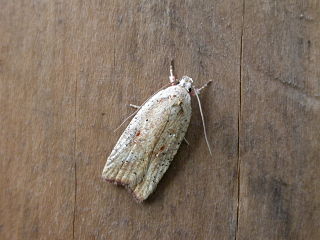
The gorse tip moth is a smallish moth species of the family Depressariidae.
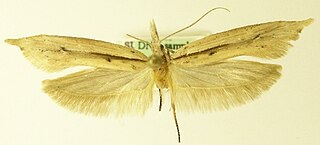
Ypsolopha mucronella is a moth of the family Ypsolophidae. It is found from Europe, through Siberia to Japan and in Asia Minor.
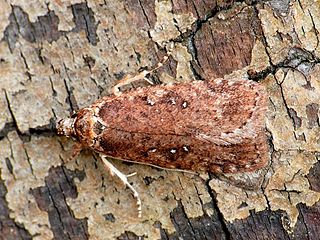
Agonopterix heracliana is a moth of the family Depressariidae. It is found in most of Europe, North Africa, the Near East, and the eastern part of the Palearctic realm. It was first described in 1758 by Carl Linnaeus in the 10th edition of Systema Naturae.

Agonopterix umbellana is a moth of the family Depressariidae. It is native to western Europe, but was introduced to Hawaii in 1988 and New Zealand in 1990 to control Ulex europaeus.

Cochylis hybridella is a moth species of the family Tortricidae. It is found in most of Europe, the Near East, China, Japan, Korea and Russia.

Agonopterix ciliella is a moth of the family Depressariidae. It is found in most of Europe, except the Iberian Peninsula, most of the Balkan Peninsula and the Benelux. It is also found in North America.

Agonopterix conterminella is a moth of the family Depressariidae which is found in Asia, Europe and North America. It was described by Philipp Christoph Zeller in 1839 from a specimen found in Augsburg, Germany. The larvae feed on the terminal shoots of willows.

Agonopterix pallorella is a moth of the family Depressariidae. It is found in most of Europe.

Agonopterix purpurea is a moth of the family Depressariidae. It is found in most of Europe.

Agonopterix subpropinquella is a moth of the family Depressariidae. It is found in most of Europe.

Agonopterix yeatiana is a moth of the family Depressariidae. It is found in most of Europe.
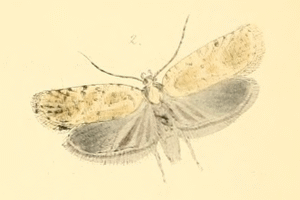
Agonopterix nanatella is a moth of the family Depressariidae. It is found in most of Europe, except Fennoscandia, Poland, Ukraine, the Baltic region and most of the Balkan Peninsula.
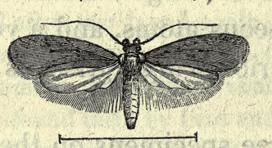
Agonopterix rotundella is a moth of the family Depressariidae and is found in most of Europe. It was first described from moths found in Surrey, England by the entomologist John Douglas in 1846.

Agonopterix assimilella is a moth of the family Depressariidae. It is found in most of Europe.

Agonopterix kaekeritziana is a moth of the family Depressariidae. It is found in most of Europe east to the Near East and the eastern part of the Palearctic realm.
Agonopterix encentra is a moth in the family Depressariidae. It was described by Edward Meyrick in 1914. It is found in Japan and the Russian Far East.
Agonopterix echinopella is a moth in the family Depressariidae. It was described by Pierre Chrétien in 1907. It is found in Algeria and Palestine.
Gonionota isastra is a moth in the family Depressariidae. It was described by Edward Meyrick in 1926. It is found in Colombia.
















